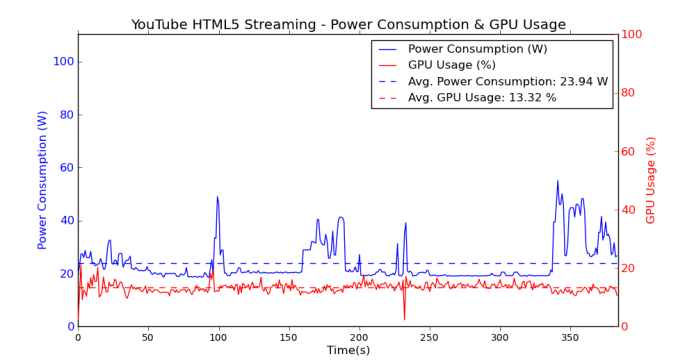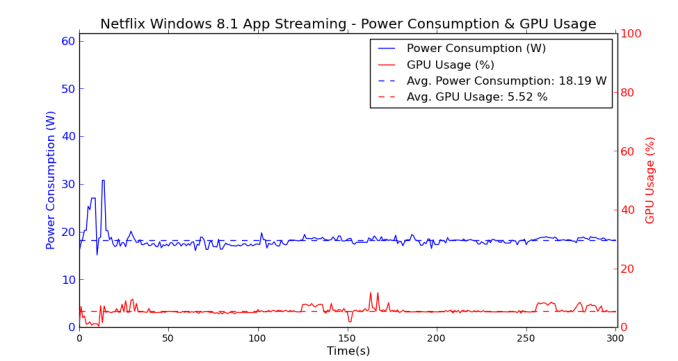GIGABYTE BRIX Pro: A Second Look at the Intel i7-4770R with Iris Pro HD 5200
by Ganesh T S on June 14, 2014 5:00 PM ESTHTPC Credentials
Accuracy of display refresh rate, efficiency while streaming OTT content and the ability to use powerful video renderers such as madVR are some of the primary points of interest in terms of HTPC usage.
Custom Refresh Rates
In our initial Haswell HTPC review, we found that Haswell provided excellent display refresh rate accuracy. Our experience with the BRIX Pro was no different.
The gallery below presents some of the other refresh rates that we tested out. madVR reports frame drops / repeats only once every 6 hours or more in the quiescent state.
While it is not easy to configure custom resolutions / refresh rates from the main UI for the graphics configuration, it is possible to set the refresh rates manually by deselecting the 'Hide Unsupported Monitor Modes' in the monitor properties. I was able to successfully drive the display at 50 Hz on the Sony KDL46EX720 using this method.
Network Streaming Efficiency
Evaluation of OTT playback efficiency was done by playing back our standard YouTube test stream and five minutes from our standard Netflix test title. Using HTML5, the YouTube stream plays back a 720p encoding, while Adobe Flash delivers a 1080p stream. The power consumption at the wall as well as the GPU usage while playing them on Mozilla Firefox are provided in the graphs below.
Netflix streaming evaluation was done using the Windows 8.1 Netflix app. Manual stream selection is available (Ctrl-Alt-Shift-S) and debug information / statistics can also be viewed (Ctrl-Alt-Shift-D). Statistics collected for the YouTube streaming experiment were also collected here.
It is a bit surprising that Flash streaming (at a higher resolution) seems to be more efficient in terms of resource usage compared to HTML5. On the Netflix front, GPU usage for the decoding of the 5.8 Mbps video stream is pretty low and power consumption is quite low given the CPU inside. However, it can't rival the efficiency of the D54250WYK NUC kits (which utilize ULV CPUs) when it comes to video decoding / streaming efficiency.
Notes on madVR
Given the better GPU available in the Core i7-4770R, it can be expected that the madVR capabilities are slightly better than what we found in the initial Haswell HTPC review. In that review, decoding and rendering benchmark numbers for madVR, as well as other renderers, were presented. Those tests were performed on a i7-4765T. The i7-4770R in the BRIX Pro has a slightly higher TDP. There should be no cause for concern as to whether the BRIX Pro can perform as well as the Haswell HTPC that we presented in our initial review with respect to those aspects.
Andrew Van Til put the BRIX Pro through some madVR tests in his MissingRemote review and came away with the conclusion that Lanczos 4-tap with anti-ringing as well as Jinc 3-tap with anti-rining work for all types of contents (resolutions / frame rates up to 1080p) except for 720p60.
On the whole, the performance of the BRIX Pro as a HTPC is as expected. However, those looking for a pure HTPC solution would do well to consider other alternatives. In our opinion, the incremental madVR capabilities are not worth the noisy cooling solution. The other aspects that the BRIX Pro excels at are easily achieved using other Haswell-based machines (including the Intel NUC).



















55 Comments
View All Comments
dylan522p - Saturday, June 14, 2014 - link
Fair enough. The SSD market moves so fast can't blame you on that.Yorgos - Monday, June 16, 2014 - link
It doesn't matter which is inferior when we are talking for a small percentage in performance, actually in those speeds I don't think it makes any difference. What matters is that samsung offers the best silicon in the market and has the least problems with its ssds so most of the builds will prolly have samsung instead of crucial.cubee - Saturday, June 14, 2014 - link
How much impact will DDR4 have on iGPU performance?schizoide - Saturday, June 14, 2014 - link
Alienware alpha (steam machine) will be out in a couple months for $550, which is less than the barebones Brix Pro, with no RAM or storage. The Alpha is an i3 with 4GB RAM and a "maxwell" (real 750ti-ish) GPU and a 500GB HD. It will actually be capable of 1080p gaming, and costs less. It is quite a lot larger than the brix, but still small compared to any other computer. Oh, and you get an x360 controller and a win8.1 license too.Morawka - Sunday, June 15, 2014 - link
750ti wont run 1080p but in about 1/3rd popular titles.. A 760 is really needed to run 1080p comfortably with a decent list of settings.Qwertilot - Sunday, June 15, 2014 - link
The sort of people buying this sort of thing/ a 750ti aren't setting obsessed :) 750ti well ahead of this things performance of course and about the minimum you want to be taken half way seriously as a gaming desktop.Interesting to see how close Broadwell K can get though, with the improved/larger GPU stuff and I'd presume a somewhat larger overall power budget to boot.
schizoide - Sunday, June 15, 2014 - link
Yeah pretty much this. It won't run 1080p on ultra settings in all titles, but if you turn down the options a bit they will run smoothly.tipoo - Saturday, June 14, 2014 - link
I'm curious in the lower end of the BRIX, especially for a parent computer. The one at $250 with the AMD APU. Seems like a whole lot of compute power for that much money.schizoide - Saturday, June 14, 2014 - link
The low-end brix/nucs are a lot more interesting, yeah. Either as perfectly fine little desktops, steam streaming clients, or HTPCs. The high-end ones suck, because the GPUs are not comparable to the current console generation.TiGr1982 - Saturday, June 14, 2014 - link
As a funny fact, this little box (based on Haswell i7) is faster than Core i7-4960X (Ivy Bridge-E) in single-threaded CPU performance (because the latter haxacore is based on older uarch).